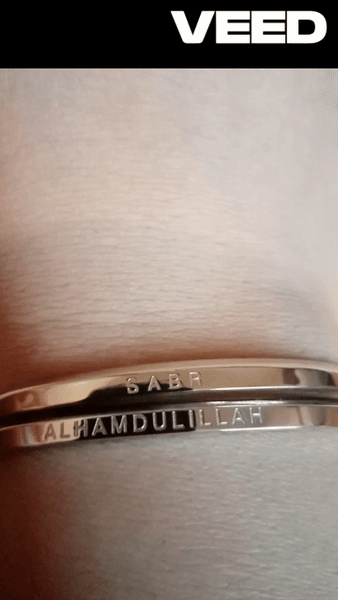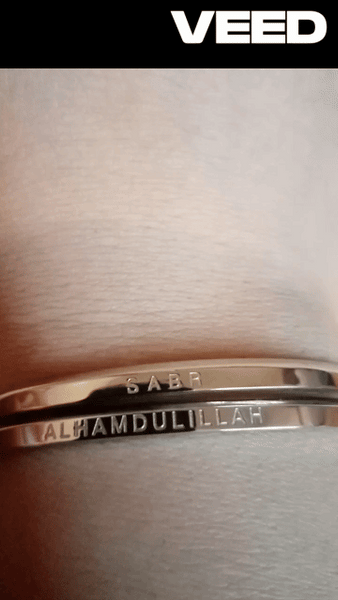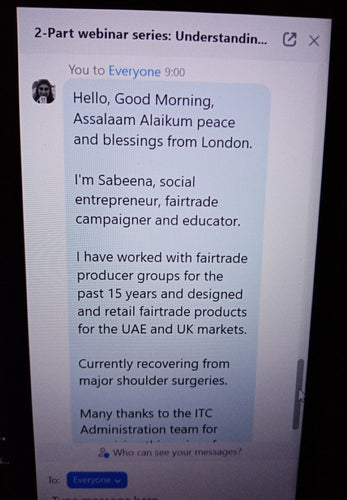
As a passionate advocate for fairtrade and ethical slow fashion I decided to enroll on the Future Learn 'Who Made Your Clothes?' Course with the University of Exeter and Fashion Revolution.
This online course is free but you can receive a certificate and unlimited access to resources and materials for $39 which is approximately £30 depending on the exchange rate.
Review of the course recording
video here
We were introduced to the concept of fast fashion and read about the Rana Plaza tragedy.

Rana Plaza was a garment factory located in central Dhaka Bangladesh. It collapsed April 2013 and over 1,138 people perished.
Most of the workers were women the only bread winners working long hours in dangerous conditions. Many earned 5, 300 taka less than £54 month.
The disaster was unprecedented and horrific.
Since the tragedy many international fashion brands have signed the Bangladesh Safety Accord to improve fire and safety for millions of garment workers,but it remains up to stakeholders such as consumers to campaign for a living wage and decent working conditions.
Lesson 1.5 asked us provide details about the clothes we were wearing that day.
I chose to talk about my 'Stick With Foncho' T-shirt.

I love wearing my worn out 'Stick with Foncho to make bananas fair' fairtrade certified cotton T shirt.
BRAND: EPONA CLOTHING - LONDON
WEBSITE: WWW.EPONACLOTHING.COM
MATERIAL: 100% FAIRTRADE CERTIFIED COTTON
FLO CERTIFICATION: FFLE0186
COUNTRY OF ORIGIN: INDIA & BANGLADESH
DESIGN: STANDARD CREW NECK T SHIRT, MACHINE STICHED, LABEL NOT SURE
COMFORTABILITY FACTOR: VERY COMFY
PRICE: APPROX £10-15
A link to the typical journey of their clothes.

1. The cotton is picked and ginned in Kantabanji and transported to Noidar (India).
2. The cotton is spun into workable yarn for our factory in Dhaka.
3. The yarn is knitted and dyed, cut and sewn in our factory in Dhaka, this is where our yarn is transformed into garments you buy.
4. Once the finished garments arrive in the UK they are stored at our printers ready for purchase. All our garments are supplied both printed or blank.
Lesson 1.6 & 1.7 we were asked to examine our clothes in more detail and fill out the table below.


I chose the categories SPECIAL, MEMORY AND FUN!
SPECIAL: This glamourous, silk, chiffon, hand embroidered zardozi and crystal traditional Pakistani party dress was purchased by my late mother for a wedding.
I understand an aunt in Pakistan purchased this dress late 2013. It has no labels & you can view it below. 
Turquoise silk, chiffon, zardozi, crystal Pakistani dress
I'd hazard a guess it's handmade, bespoke & produced by a few talented home based workers Lahore, Pakistan.

MEMORY: I decided to talk about a beautiful hand embroidered green cotton Balochi kurta (long blouse) purchased when I visited the Ra'ana Liaquat Craftsman's Colony, Karachi, 2015.
I rarely purchase any clothes because I know they don't have a transparent chain I can read and research.
To be clear I haven't the foggiest where the cotton was produced but as Pakistan has a thriving cotton industry. Another educated guess is the cotton was grown and manufactured in the Punjab province where most of the textile mills & designers can be found.
My green embroidered hand stitched kurta (blouse) was designed by Haseena an entrepreneur, designer & advocate for Balochi traditional crafts and embroidery.
You can watch Haseena's interview by the clicking on the YouTube link below.
If you want to have a giggle I've attached a collage of myself supporting the Make Fruit Fair Campaign.

FUN: This gorgeous Fairtrade Banana Suit was retailed by the Fairtrade Foundation Shop London. I was raising awareness for the 'Make Fruit Fair' campaign with Banana Link.
MATERIAL: I think it's thick felt, it has no labels and I have no idea where it was produced or stitched.
I will contact the Fairtrade Foundation and ask them for information.
I have upload my tweets below.

Many thanks to Rebecca Turner @FairtradeUK for replying to my query about my fab fairtrade banana suit. #WhoMadeMyClothes? @fash_rev_mooc pic.twitter.com/WWSuoBvVXt
— Lilfairtrade Shop (@thelilfairtrade) July 25, 2017

Good Morning @FairtradeUK Q: Who produced this gorgeous #fairtradebananasuit? I'm studying '#WhoMadeMyClothes?' @UniofExeter #nolabels.TY! pic.twitter.com/GSvvuJjtvE
— Lilfairtrade Shop (@thelilfairtrade) July 5, 2017
This week we were asked to take an outrospective look at our clothes and learn how to emphasise with others.
The Power of Outrospection - Roman Krznaric
Lesson 2.1
We were asked to read about the lives of 3 garment workers share our thoughts.
Pages 26 - 33 from Fashion Revolution’s 2017 Money, Fashion, Power fanzine, illustrated the work and lives of three women:
Photographs here
Photographs here
Photographs here
Lesson 2.3
All learners were asked to choose one item of clothing they wanted to research in detail.
I couldn't research my turquoise dress as it has no labels so I've decided to conduct research about my fair trade banana suit.

Lesson 2.5 WHO ASSEMBLED OUR CLOTHES?

Hi Sabeena
Thanks for getting in touch and apologies for the delay in responding to you.
Here are the answers to your questions. Livslust organisation in an excellent design by a social enterprise in Latvia called Livslust, which supports a vocational program for people with a high risk of otherwise being marginalised - http://www.livslust.com/
Best wishes,
Rebecca

Any support in my research would be gratefully appreciated.
I look forward to hearing from the team soon.
Best regards
Sabeena
Remember to copy information, quotations and sources into your research document as you do this. Add these details under the title – Tier One findings - and don’t forget to note down the names of the garment workers you find, as well as what they say.
For this stage of your research, please follow the step by step search advice below:
After examining your garment’s label to find out the materials from which it was made, do an internet search to find out how each one is grown and/or made into fabric. You might want to begin with a website such as Wikipedia, which has a clothing material page.
Contact your brand’s customer service department by phone, email or social media and ask them to tell you from which companies and which countries they sourced your garment’s materials. Refer to the countries that you added to your table and ask if this information is correct.
Check Fashion Revolution’s Research Library board Pinterest again to see if you can find reports about the growing/making of your garment’s materials in different countries. Read these reports to find human stories and/or to get some ideas for search terms which may enable you to find human stories elsewhere.
See how likely it is that your materials were produced in countries where forced and/or child labour is common by checking this interactive US Department of Labor List of Goods Produced by Child Labor or Forced Labor. Filter the ‘Good’ list to show ‘garments’, ‘textiles’ and/or ‘cotton’. Use your findings as search terms - e.g. ‘China’, ‘cotton’, and ‘child labour’ - to find the stories which go with this information.
If your garment is made from cotton, which could have been grown in Uzbekistan, check the Responsible Sourcing Network’s Pledge Against Forced Labor in the Uzbek Cotton Sector to see if its brand has signed. This is a campaign to eliminate forced labour from cotton supply chains in one country where it is known to be commonplace. Again, use your findings as search terms - e.g. your brand, ‘cotton’, and ‘Uzbekistan’ - to find the human stories that go with this information.
Another place to look for stories of human labour are in the case studies of reports into ‘industrial toxicology’, ‘occupational toxicology’, ‘industrial health and safety’ and/or ‘occupational health and safety’. Search for your material and each of these phrases and see what you can find. Some results may be entirely technical, but you may be able to find case studies detailing working environments, accidents or long-term exposure to substances used in the growing and manufacture of materials and their effects on workers’ lives. This search would be helpful, for example, if your item of clothing had been sandblasted.
As before, don’t forget to look both for human stories (e.g. cotton farmers talking about their lives and work) and background information (e.g. International Labour Organisation conventions).
Remember to copy information, quotations and sources into your research document as you do this. Add these details under the title – Tier Two findings - and don’t forget to note down the names of the workers you find, as well as what they say.
Lesson 2.10 CREATE YOUR OWN STORY
Lesson 3.3
Who shoulders the blame fast fashion brands or consumers?
I feel it is our responsibility as consumers to ask brands how much garment workers are paid and no reassure shoppers that workers are not exploited or harassed.
By the end of week 3 learners learnt to be,
Be Curious - gain a detailed understanding of garment supply chains, how they work, and the interdependence of places, resources and people upon which they rely
Further Reading and Links:
Future Learn WHO MADE MY CLOTHES? UNIVERSITY OF EXETER
Epona Clothing London - Learn More
Epona Clothing London - Fairtrade
Epona Clothing London - Blog News Jan 16
Ra'ana Liaquat Craftman's Colony
Garment Workers Diaries
Fashion Revolution Fanzine - Money Fashion Power
Roman Krznaric



This month I continued to recover from my right shoulder treatment.
I remotely attend two webinars about 'Understanding the home décor
and textile and apparel market.'
These webinars were organised by ITC.